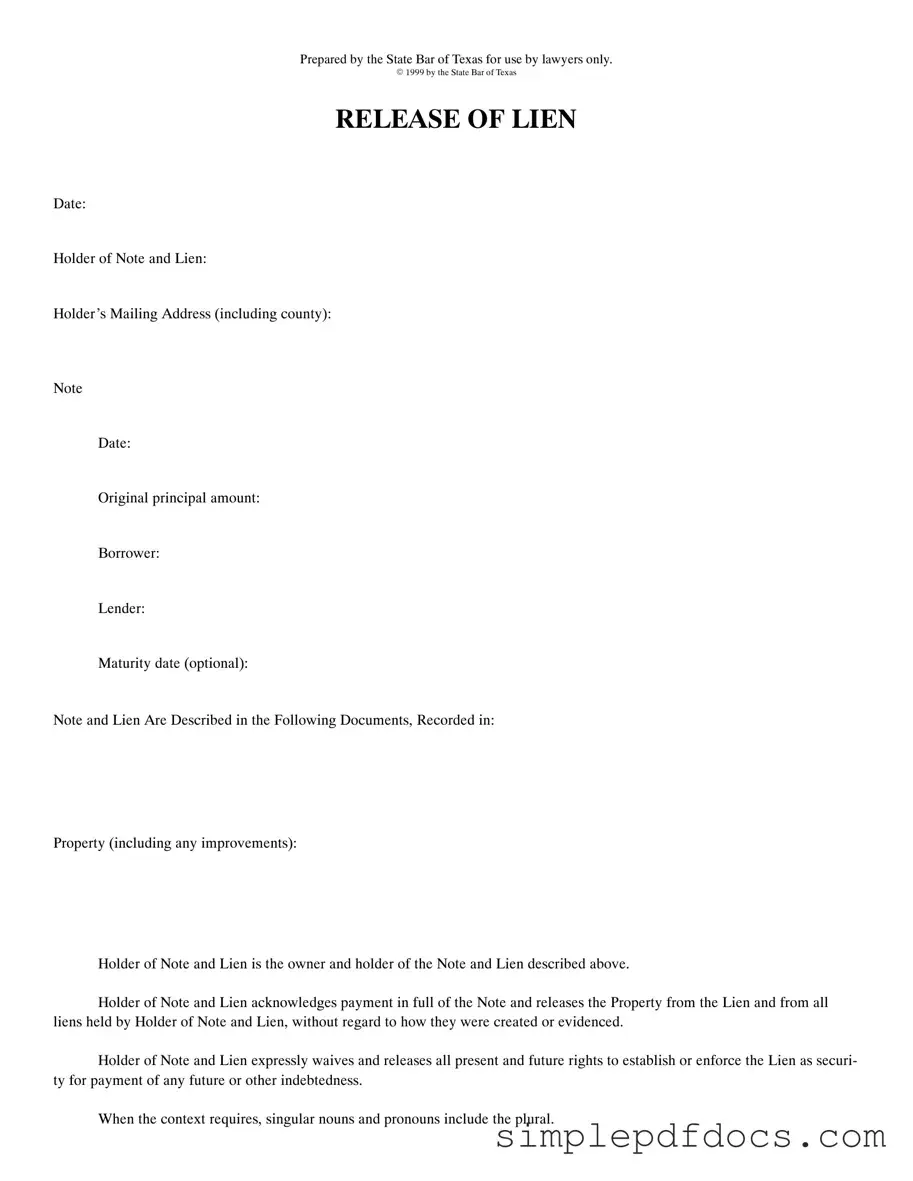The Release of Lien Texas form serves as a critical document in the realm of property transactions and financing, ensuring that borrowers can clear their titles and lenders can formally acknowledge the satisfaction of their claims. This form is specifically designed for use by legal professionals, highlighting its importance in the legal landscape of Texas. It captures essential details such as the date of the release, the names and addresses of both the holder of the note and lien, as well as the borrower and lender involved in the transaction. The original principal amount and maturity date may also be included, providing clarity and context to the financial obligations that have been fulfilled. By completing this form, the holder of the note and lien affirms that they have received full payment and, consequently, releases the property from any liens they hold. This release is comprehensive, waiving any future rights to enforce the lien for additional debts. The form also includes sections for notarization, ensuring that the release is legally binding and properly recorded. Understanding the nuances of this document is vital for both legal practitioners and property owners, as it directly impacts ownership rights and financial responsibilities.
